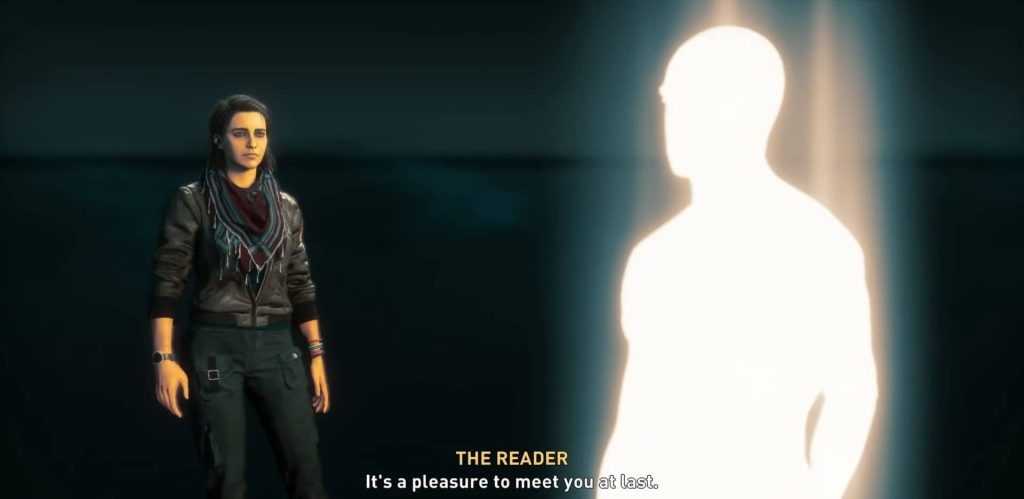Details of the idea, originally dreamed up by Assassin’s Creed co-creator Patrice Désilets, have been published by Lars de Wildt, a researcher of conspiracy theories, religion and other beliefs in digital media culture at Belgian research university KU Leuven. As a PhD student, de Wildt interviewed various former Assassin’s Creed developers back in 2019. Today, he pointed to a new footnote detailing story details gleaned from these interviews. These fascinating snippets show how the Assassin’s Creed story has evolved over time - but also how one element from this scrapped ending has been recently revisited, more than a decade later. “The original plan was pieced together based on interviews by me with AC’s original creator Patrice Désilets and AC3’s creative director Alex Hutchinson,” de Wildt wrote. “Briefly put, the third game would end with a resolution of the conflict in the present day, with Desmond Miles taking down Abstergo using the combined knowledge and skills of all his ancestors, including AC1’s Altair and AC2’s Ezio.” Speaking to Eurogamer today, AC3 creative director Alex Hutchinson recalled discussing the matter with the student, and that an earlier plan for the game had indeed focused on a big modern day showdown with Desmond as its star. “Also, it is the end of the world in 2012,” de Wildt continued, “and Desmond Miles and Lucy are starting a new civilisation somewhere else - as Adam and Eve.” “That’s why she’s called Lucy, after the Australopithecus afarensis,” Désilets told de Wildt in an interview. As for where Desmond and Lucy were going, well… “Boum! It’s a freaking spaceship!” Désilets replied. Of course, by the time Assassin’s Creed finally got to its third numbered entry, released back in 2012, plans had changed considerably. AC3 still wrapped up Desmond’s story and that particular present day threat, but many other details were changed. The series’ success had seen Ezio’s tenure spun out into its own trilogy of games, while Désilets was long gone from Ubisoft after a very public falling out with company boss Yves Guillemot. The character of Lucy had also already exited the series (Désilets once said he killed off the character because Veronica Mars and Frozen actress Kristen Bell requested royalties for future appearances). Additionally, Abstergo survived to remain the franchise’s villain in many games since. Most notably, of course, the series did not end, and its two stars did not leave Earth on a spaceship. Why a spaceship? Fans have long pondered if the Isu, the series’ mysterious precursor race, were actually extra-terrestrials. Perhaps the Isu bunker where Desmond saved the world was originally envisioned as a secret spacecraft? But there’s another fascinating element here - something which may feel familiar to anyone who has finished Assassin’s Creed Valhalla. Look away now if you don’t want to read discussion of that. The end of Valhalla sees Layla - Desmond’s successor as the series’ modern day protagonist - join Desmond’s spirit in “the grey” - a sort of digital in-between space where their consciousnesses live on. Imagery of the series’ two modern day stars together is pretty obvious in its allusion to Adam and Eve. Valhalla shared key development figures with those who have spoken in the past about Ubisoft having ideas in place for a specific ending, including long-term Assassin’s Creed writer Darby McDevitt, who worked on Valhalla as narrative director. Perhaps these ideas continued to include the Adam and Eve idea, which is why it popped up again there? “This storyline has an ending, but because all of history is open to us we see the universe as a Doctor Who type thing,” McDevitt said back in 2014. “There are so many possibilities we don’t want to definitively end the universe, but we can have storylines that have endings. “The end of the Desmond trilogy changed slightly but it was always intended to end that way. And then about two years ago we planned for another story… [But] we’ve moved on from specifically defining when a story will end.” It’s fascinating to see how a series has adapted plans for its wider narrative over more than a decade, and resurfaced old ideas. Perhaps a spaceship could one day still be on the horizon?

